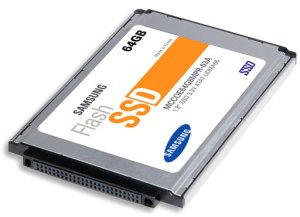
The firm claims about 10 to 20 percent of flash-based notebooks get RMAed because of technical failure; this means the failure rate of SSDs is ten times higher than what notebook makers are seeing with regular hard drives.
The rest are coming back because of lackluster performance. Flash-based notebooks can't match notebooks with regular hard drives in terms of applications like video streaming, he said. These notebooks also cost a lot. Inserting a flash-based drive into a notebook adds about $900 to the price or more.
Cohen prefers to say a large computer manufacturer is having these problems. From my own research, I can tell you that Dell is so far the manufacturer that has promoted flash drives in notebooks the most. Dell gets its flash drives from Samsung. Apple just starting shipping flash-based notebooks.
A Dell representative declined to comment on failure rates or returns. However, Dell is admitting that current flash-based drives can exhibit worse performance on some applications where data is exchanged in small packed sizes, and one of those applications is Microsoft Outlook. "An SSD (solid state drive) can be slower than a traditional hard drive" on Outlook, the representative said. But flash drives are superior for random access, the representative added, than regular drives.
To that end, Samsung is coming out with a new type of drive that corrects that issue, the Dell representative said. (Calls are out to Samsung, but no reply yet.)
While the returns are bad news for notebook makers right now, the problems also dim the outlook for the flash industry in general. Flash manufacturers are looking for applications that will suck up the large volume of chips coming out of factories right now. The industry went on a building spree in the last few years. Many hoped that notebooks would accomplish this. Notebook makers currently are inserting flash that can accommodate a single bit per memory cell. Both notebook makers and flash makers want the industry to shift to cheaper flash that can hold two or more bits per cell so the prices of these notebooks can be closer to conventional notebooks.
Multi-bit flash, however, isn't as reliable, so if the industry is having problems with single-cell flash, it's going to be tough to shift to the cheaper type of memory, Cohen said. As a result, the oversupply in flash will linger and prices will continue on their rapid downward descent.